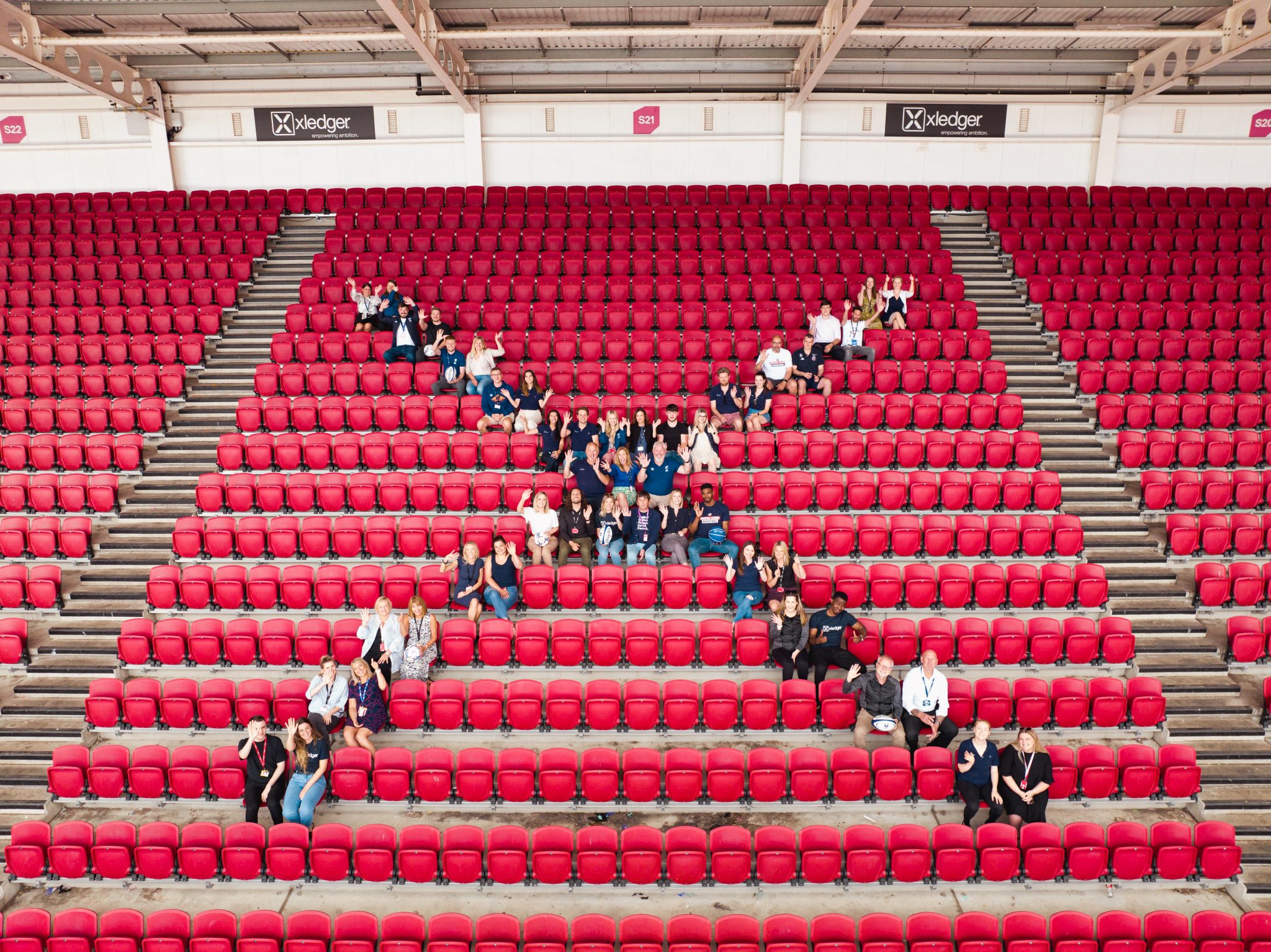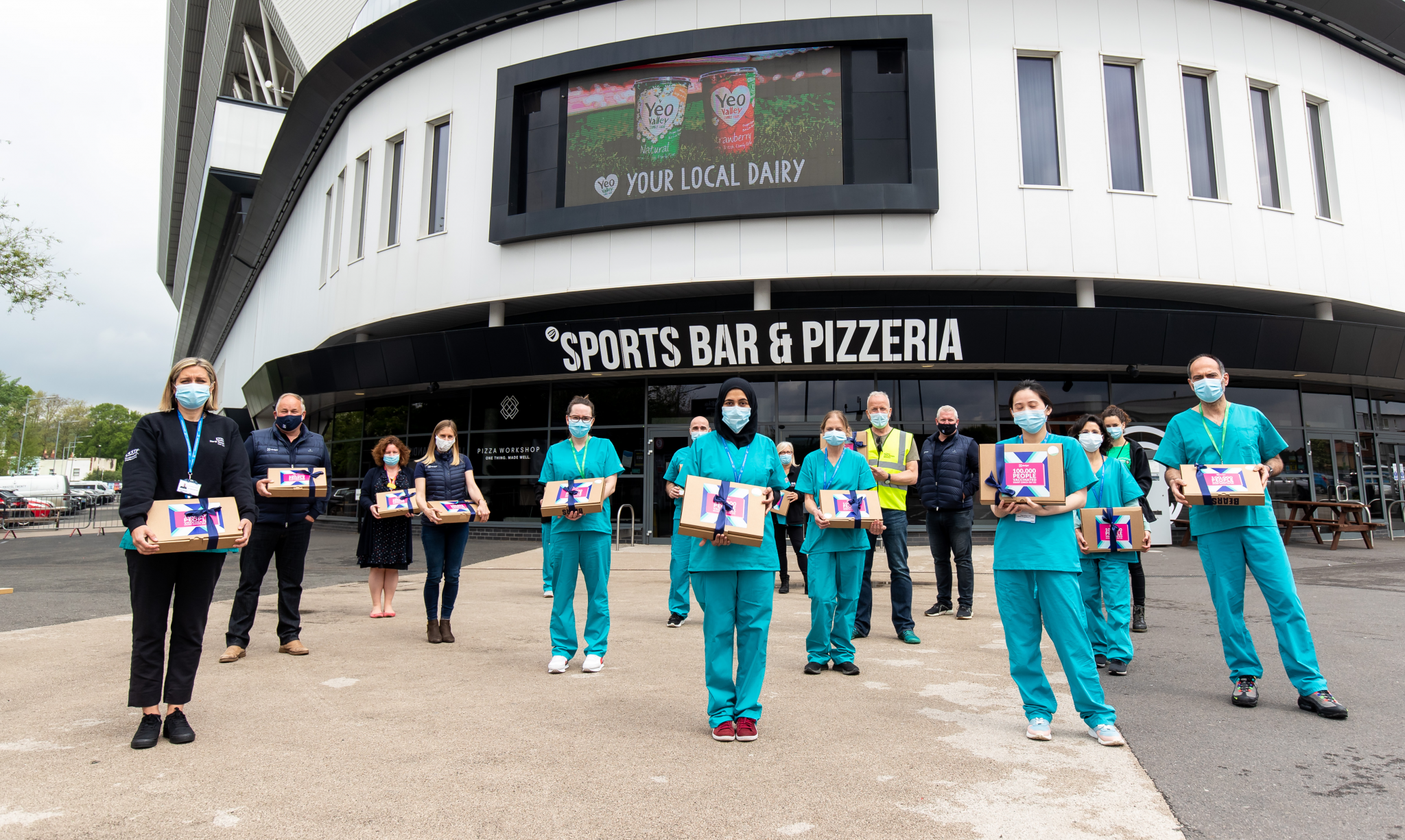At Xledger, we’re all about empowering ambition.
Through our cloud-based finance software, our customers and partners can utilise technology that provides them with data they can trust. This then allows the user to access valuable insights that help them to make better business decisions and drive transparency across their organisation.
As Head of Operations, I’m always curious as to how others are using innovative technology and how data fuels their success and powers their ambition.
One such area where tech and data perfectly combine with performance and innovation is in professional sport.
As a proud sponsor of Bristol Bears, I was invited to visit their High-Performance Centre to meet with Data Scientist, Harry Sharman, and Sports Scientist, Jake Gillies, to find out how data plays a critical role in operations and is used to fuel elite performance on the pitch.
If you would like to watch the full video scroll to the bottom of the page now or click here!
Encouraging adoption and embracing change
The first piece of tech Harry and Jake showed me was an Instrumented Mouth Guard (IMG) which is an incredible advancement in both sporting and medical technology.
With tiny sensors fitted inside a gumshield, IMGs are equipped to measure the impact of collisions on the rugby field. These sensors can provide valuable information to coaches and medical staff about the severity of impacts, helping to identify players who may need to be assessed for concussion or other injuries earlier than they would otherwise.
Whilst this data could be invaluable in the future, adoption is still currently relatively low, having only been introduced into Premiership Rugby in the 22/23 season. It was interesting to hear that the players weren’t immediately receptive to this little bit of tech. Change is uncomfortable, and in this case, literally. Encouraging adoption is critical to driving meaningful data and in turn better insights.
A gumshield can be pretty awkward at the best of times, but when filled with instrumentation, players have been finding this to be an on-field distraction. While this is only the second design iteration of this product, it’s being constantly innovated for maximum comfort.
It’s always intriguing and inspirational to see how design and product development evolve to meet challenges and improve the user experience. That’s something we take a great deal of pride in at Xledger. Our updates and product developments are always delivered with UX in mind, and often based on users’ feedback. Also, like with the deployment of these Instrumented Mouth Guards, we’re always looking to deliver with minimum disruption to the users.
As these mouthguards become better and adoption increases, the data gathered will become even more valuable for future analysis as it gathers more impactful conclusions and the ability to tweak and adjust future iterations for the better.
Much like those key finance system users within a business, the more you are able to show a team member how new technology and processes can improve efficiency, longevity, or performance, the less likely they are to resist the change.
This theory has been proved with the adoption of the second piece of tech – a player GPS.
How to tell the ‘story’ of data
Used religiously both in training and on matchday, players have the use of GPS technology. GPS can measure distance covered, top speed, intensity, dynamism on the pitch and so much more.
Each player’s GPS has become an invaluable tool within the Bears coaching and performance teams to track targets, create training structures and help make informed decisions around when players should play matches, how long for, and areas of their game they can improve.
But this brings up an interesting question, how do you know which data is critical data?
Harry and Jake’s response to this was one that I’m all too familiar with.
Capturing data is one thing. But knowing how to turn that raw data into meaningful and relevant information is critical. With so much data, it can be easy to get lost in the volume of metrics and lose sight of what is going to be insightful and valuable for what you need.
The second challenge is then relaying this information back in a clear and relatable way to the experts that will use it and take action… and this comes down to storytelling.
In the case of the Bears, it’s the specific member of staff identifying the key insights for a specific player and their needs.
The way this ‘data story’ is told and translated is, in many ways, about understanding what each stakeholder is interested in and how they need the data to be presented to them so they can draw valuable insights effectively.
Comms between players, coaching and backroom staff are much like how finance teams, budget holders and senior leadership need access to the data and insights that matter to them. How then can use that data to make informed decisions that deliver tangible outcomes.
Benchmarking performance for the greater good
At the HPC, players can see their own live data using a piece of kit called Force Plates.
These are designed to measure strength performance and build a data-driven biomechanical profile of individuals throughout an entire season.
To a layman, force time metrics are just meaningless numbers. But in sports, a force time metric tells coaching, performance staff and players where their strengths and their weaknesses lie.
Force plates use data to improve and empower the performance of the individual, for the greater good of the team. The longer a player stays with the team, the deeper and more detailed the data is on their performance over time.
The Bears use this data to track performance and with the right people to interpret it, the coaching and performance staff can gain vast amounts of insight.
At face value, this may not sound revolutionary. But the Bears’ combination of tech, data and people make them well-positioned to track progression in a meaningful way.
It’s a robust and productive process and the ability to merge tech, data and expertise is apparent throughout the entire Bears organisation.
Putting the sports element to one side, this is an amazing example of digital transformation in action. To achieve relative success in digital transformation an organisation must combine tech, people and processes… and this is exactly what the Bears have in place.
Too often organisations rush to the procurement stage thinking that tech will fix everything. This is not the case. The tech at the HPC has been carefully considered and selected based on the outcomes the team needs.
But the most important thing in digital transformation isn’t the tech.
It’s the people using the tech. You must be able to take them on that journey and it’s where I see a great strength and similarity between The Bears and ourselves. The shared knowledge and the coaches and players speaking the same language is really what makes all this work, and it’s how we work too.
Having accountants and finance experts within our team means we’re on the same page as our customers. We know their roles and the challenges they face and it’s this shared experience that makes us expertly equipped to take our users on their digital transformation journey.



